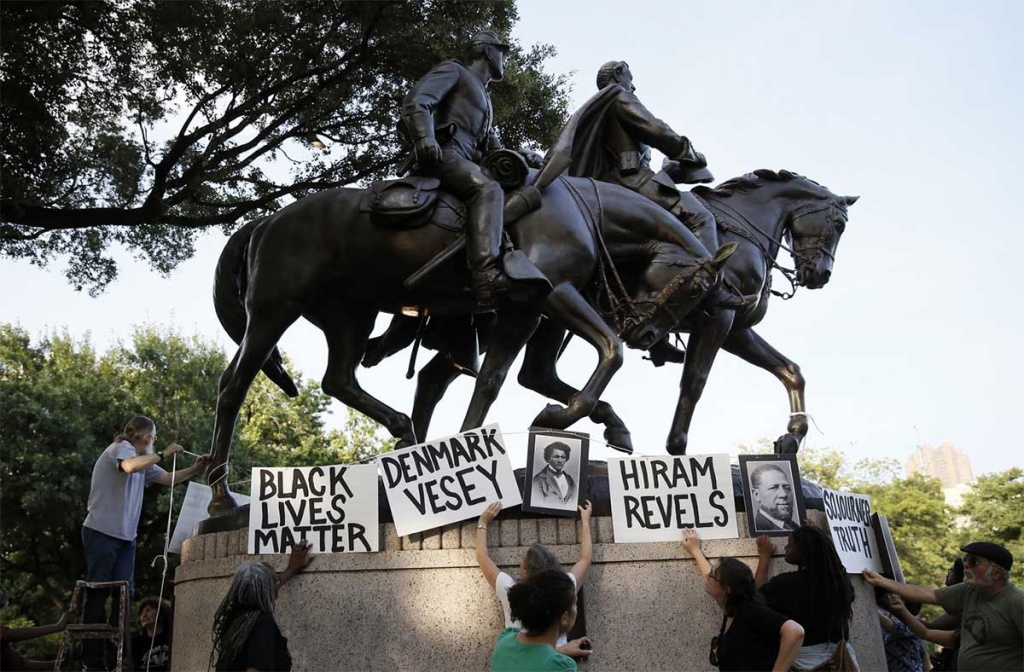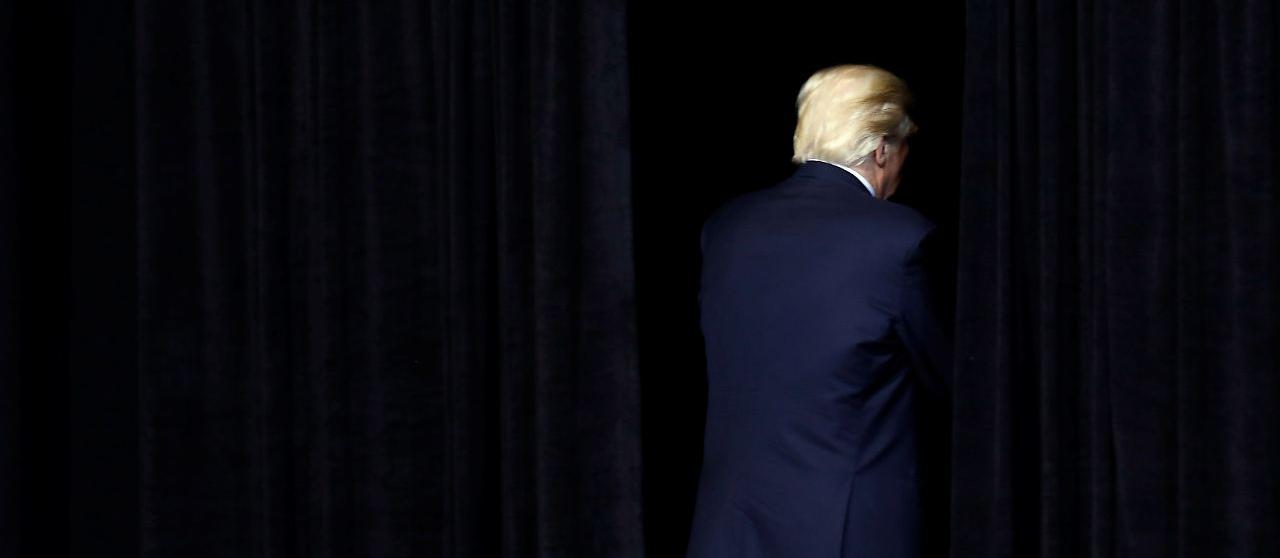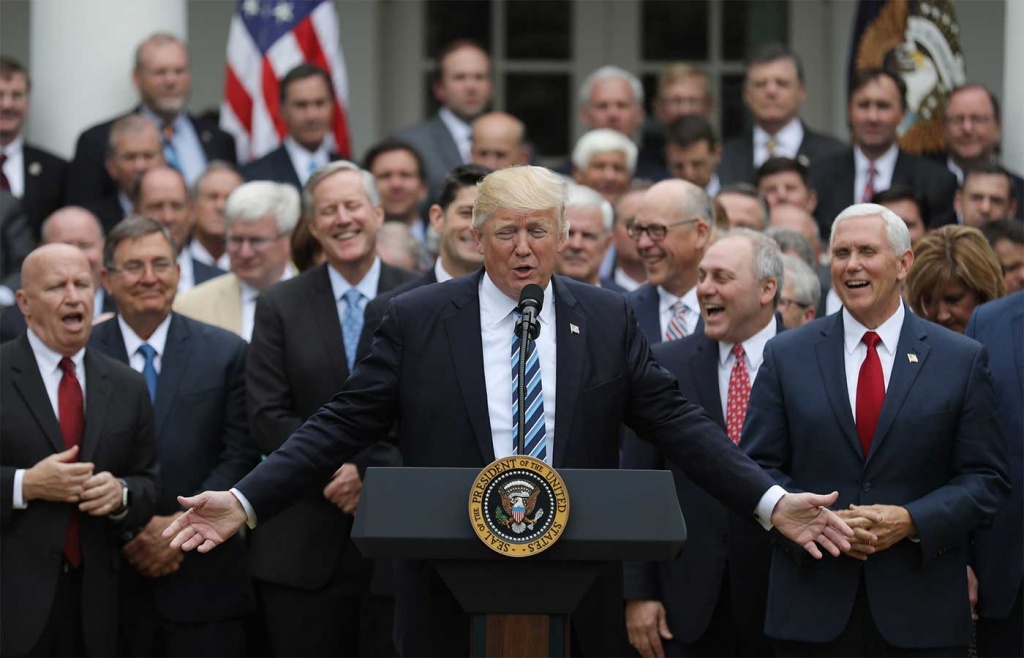As many political analysts feared, Trump really did divide America. He did so not because of his bodacious personality or inefficient management. It is all due to his unwillingness to realize the main thing — in American big league politics one cannot be neutral regarding to any forms of intolerance. And who would have thought that over 152 years after the Civil War was over, the problem of racism in the United States would take the first place again. Obvious, among the causes of that war the racial issue in general and slavery in particular, were not the main ones.
Trump called for an early end of the disorders and accused both sides of abuses. This nuance about “both sides” could have gone unnoticed if it was a question of a sports match or the shoot-out of two mafia clans. But Trump, with his remark, accused protesters against hatred, nationalism and racism in the fact that they are equivalent to members of ultra-right organizations such as the Ku Klux Klan.
Trump once again demonstrates the lack of experience in big-league politics. Trump's personality certainly became a catalyst for the strengthening of radical groups in the United States, especially such as the Ku Klux Klan. But he, as the head of the American nation now, and a major political figure, is obliged to think strategically, and not impulsively, trying to please everyone.
As many political analysts feared, Trump really did divide America. He did so not because of his bodacious personality or inefficient management. It is all due to his unwillingness to realize the main thing — in American big league politics one cannot be neutral regarding to any forms of intolerance. And who would have thought that over 152 years after the Civil War was over, the problem of racism in the United States would take the first place again. Obvious, among the causes of that war the racial issue in general and slavery in particular, were not the main ones.
Going back, the industrial North on the eve of the war there was filled with indignation and discontentment with the realization that 8 of the first 11 US presidents were Southrons, and the majority of them came from the State of Virginia. In addition, the northern states (especially in New England) dynamically built-up their own cotton factories, as well as leather and harness manufactories, metallurgical plants, weapons and ammunition manufacturing factories, pottery and furniture manufacturing factories, etc.
The premier source of the agrarian southern states’ economies was cotton, in particular its exports to England and France. Instead, the South received many inexpensive European goods, including clothes made from their own cotton. However, the production development in most American states (which represented the conventional North) forced the federal government to take protectionist measures and enact legislation that laid a tax or duty on imported goods (the most part of the purchases of the South) resulting in doubling the growth of goods. In other words, the problem of slavery was important (at the beginning of the war nearly 4 million slaves worked there), but was not the main reason for secession of six southern states from USA in February 1861.
A similar background is critical to understanding today's events. But, as it is known, the forces of the Confederation were not the only ones who suffered a severe defeat. The whole country could not return to life for a long time. It will just suffice to mention, that the Americans suffered the biggest loss in the history of the United States (more than 600 thousand people), and it took 12 years to reintegrate the southern states, the losers of the war, into the federation. So, for the American society, the symbolism of the Confederation embodies the desire for separation, disobedience, rejection of general laws and the foundations of the federation. But the South, the loser of the war, influenced the sociocultural code of the United States much more significantly — Southrons, dissatisfied and desperate due to the loss, put the blame on the most weak-willed (in many senses) category - the slaves, who just recently gained liberty. Along with them were all those who stole jobs from the “native white American” and “strongly disagreed with the American manner of life.” This category later covered immigrants from Europe after the First World War and Japanese during the Second World War, and even Communists during the Cold War.
Approximately since the beginning of the 20th century, when segregated laws, known as Jim Crow Laws, came into force, the representatives of the “humiliated and insulted” by the victory of the North, with its policy of abolition of slavery, dynamically began to raise monuments in honor of the soldiers and generals of the Confederation's army. For them, they were a symbol of courage, upholding of interests of “real Americans.” However, over time, especially with the cases of lynching of blacks and other minorities, the symbolism of the Confederates began to embody the ideas of nationalism, discrimination and segregation. In fairness, it should be noted that many of the nearly 1,500 monuments were raised by the relatives of victims of the Civil War, and they are oftentimes located in cemeteries and private institutions. Nevertheless, by the beginning of 2017, 718 monuments had been installed in public places. It is now them that are the apple of discord. Notably, the campaign for their demolition began in the end of 2014, riding on the wave of frequent cases of police brutality and black people being murdered by police officers. Still, recently the question of the demolition of monuments gained unprecedented momentum.
Of course, the case is notorious affair in the city of Charlottesville in Virginia, where on August 12, following the authorities’ decision to demolish the monument to Army General Robert Lee, there were massive clashes between far right activists and their opponents, which led to victims. A day later, a crowd of left protesters stormed a monument to the collective image of a Confederate soldier near the courthouse in Durham, North Carolina, and deposed a bronze statue from the pedestal.
How did the US President react to such news? Here is where the most interesting part begins. Even during his election campaign, Trump constantly stressed that he is not afraid to use the term “radical Islamic terrorism.” But when political correctness is clearly of no use, he chose to take a neutral position. His first comment was made the next day, and contained an extremely important detail: Trump called for an early end of the disorders and accused both sides of abuses. This nuance about “both sides” could have gone unnoticed if it was a question of a sports match or the shoot-out of two mafia clans. But Trump, with his remark, accused protesters against hatred, nationalism and racism in the fact that they are equivalent to members of ultra-right organizations such as the Ku Klux Klan.
After the negative reaction in the society and the establishment that followed, the Trump team decided to end the President's vacation at his golf club and to give a public speech. In this speech, the 45th US President was already more categorical and stated the following: “Racism is evil. And those who provoke violence should be called criminals and bandits, including the Ku Klux Klan, neo-Nazis, white racists and all the others who want to explode all that we, the Americans, hold dear.” Everyone was waiting for such a statement. And Trump's opponents, who were waiting for the continuation of neutral rhetoric, were disappointed. But not for long.
On August 16, the administration, headed by the president, presented a modernization program of the US infrastructure. There was no press conference in the program. But Trump expressed willingness to answer journalists' questions. Over the next 15 minutes, he destroyed all efforts to take the right position for the American president and finally protected racist demonstrators, took up the position that his initial statement was misunderstood, because he does not like to talk until he knows all the “facts” and added that the Confederation monuments destroy movement throughout the country is an attempt to “change history” and to “change culture.” From the point of view of the American political culture, such statements can be regarded as a gift to opponents and loss of points. And it followed.
But we are most interested in major demarche of Trump on behalf of his own Republican Party members rather than visible criticism from the democrats. And it's not just such “war hawks” as Senators John McCain and Lindsay Graham, but also such “heavy hitters” as the Bush clan, starting from George Bush Sr. and ending with Jeb Bush - Trump's opponent at the Republican primaries. Moreover, the leaders of the Republican majority in both Houses of Congress publicly disowned Trump (although not mentioning his name). For example, Speaker of the House of Representatives Paul Ryan categorically stated, “white supremacy is repulsive. This bigotry is counter to all this country stands for. There can be no moral ambiguity.”
A severe blow to Trump's positions was a message on Twitter from a man who was always criticized the most by the president himself. It's about Barack Obama, whose tweet became the most read in the history of the social network. The former US president cited Nelson Mandela that “No one is born hating another person because of the colour of his skin or his background or his religion.”
The events in Charlottesville also affected the already difficult staffing situation in the White House. On August 17, in an interview with The American Prospect, Trump’s chief strategist Steven Bannon said that the American far right “are a collection of clowns.” But Bannon went further and added that he wanted the Democrats “to talk about racism every day. If the left is focused on race and identity, and we go with economic nationalism, we can crush the Democrats.” The next day Trump’s chief strategist left president’s administration.
Trump once again demonstrates the lack of experience in big-league politics. The uncoordinated press conference was a direct demonstration of this. He must use the whole authority of the presidential power to maximize the nation unity and to maintain the peace in the country. It is yet worse, when the issue touches such a fresh wound like racism and intolerance. You cannot equate disruptive behavior and Nazi processions with torches in their hands. Trump's personality certainly became a catalyst for the strengthening of radical groups in the United States, especially such as the Ku Klux Klan. But he, as the head of the American nation now, and a major political figure, is obliged to think strategically, and not impulsively, trying to please everyone.







